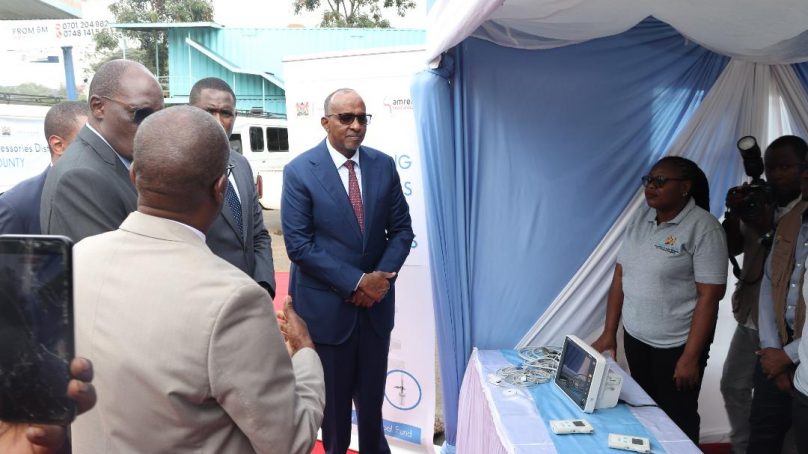
Kenya’s ministry of health distributes oxygen and patient monitoring equipment to all main hospitals
Kenya’s ministry of health kicked off nationwide distribution of oxygen and patient monitoring equipment to all 47 counties, deemed a major boost to healthcare service delivery and access to medical services throughout the country.
The exercise led by Health Cabinet Secretary Aden Duale is key milestone in strengthening the health system and ensuring that even remote regions such as Turkana, West Pokot and Marsabit can access life-saving oxygen therapy and essential monitoring devices.
“When you talk of West Pokot, Turkana and Marsabit, we are really changing healthcare service delivery in our country, particularly in the far-flung areas,” Duale said.
The consignment flagged off includes 420 multi-parameter patient monitors, 10,000 flow metres and 612 oxygen analysers to be distributed to all counties. Each county will receive at least 10 monitors and two analysers per sub-county while the flow-metres will be allocated according to completed oxygen piping works in health facilities.
Duale said the equipment would play a major role in improving patient monitoring, quality assurance and oxygen dosage accuracy. He reminded counties to prioritise preventive maintenance and ensure sustainability.
“Equipment saves lives only when it’s functioning. If it’s not maintained, it becomes redundant,” he said. “Counties must set aside funds for calibration, spare parts and continuous service.”
The minister commended the Global Fund, AMREF Health Africa and other development partners for their continued collaboration in strengthening the health sector. He directed the directorate of health products and technologies in partnership with AMREF, to oversee the distribution and training of health-workers in the use and maintenance of the equipment.
“We must move from oxygen availability to guaranteed access in every ward, theatre, nursery, and ICU,” said Duale. “If we protect these assets and maintain our partnerships, we will save lives, one patient, one facility, and one county at a time.”
Principal Secretary for Medical Services Harry Ouma Oluga hailed the initiative as a turning point in expanding oxygen access and improving clinical care in facilities.
“Oxygen is a life-saving intervention,” said Dr Oluga. “However, most Level Two and Three health facilities lack pulse oximeters to guide oxygen therapy. This initiative will help bridge that gap and strengthen emergency response for new-borns, mothers and other critical patients.”
He noted that the Ministry has established a plan for regular calibration every six to twelve months to maintain accuracy and efficiency of the equipment.
Principal Secretary for Public Health and Professional Standards Mary Muthoni reiterated that oxygen is an essential medicine and a key component in saving lives.
“This equipment will extend access to oxygen beyond referral hospitals to the grassroots level,” she said. “It will help reduce preventable deaths due to pneumonia, maternal complications and surgical emergencies.”
She called for continued collaboration among counties, health-workers and development partners to ensure that the equipment serves its intended purpose effectively and sustainably.
“It’s not just about distribution of machines,” she added. “We must ensure they are installed, used and maintained properly to make a real difference.”
The ministry pledged to work with counties and partners to achieve Universal Health Coverage (UHC) and strengthen healthcare delivery systems.
“Today we are not just flagging off equipment,” Duale concluded. “We are flagging off hope for every Kenyan who deserves quality healthcare.”
- A Tell Media / KNA report / By Hope Kimunguyi and Ishmael Bosire







